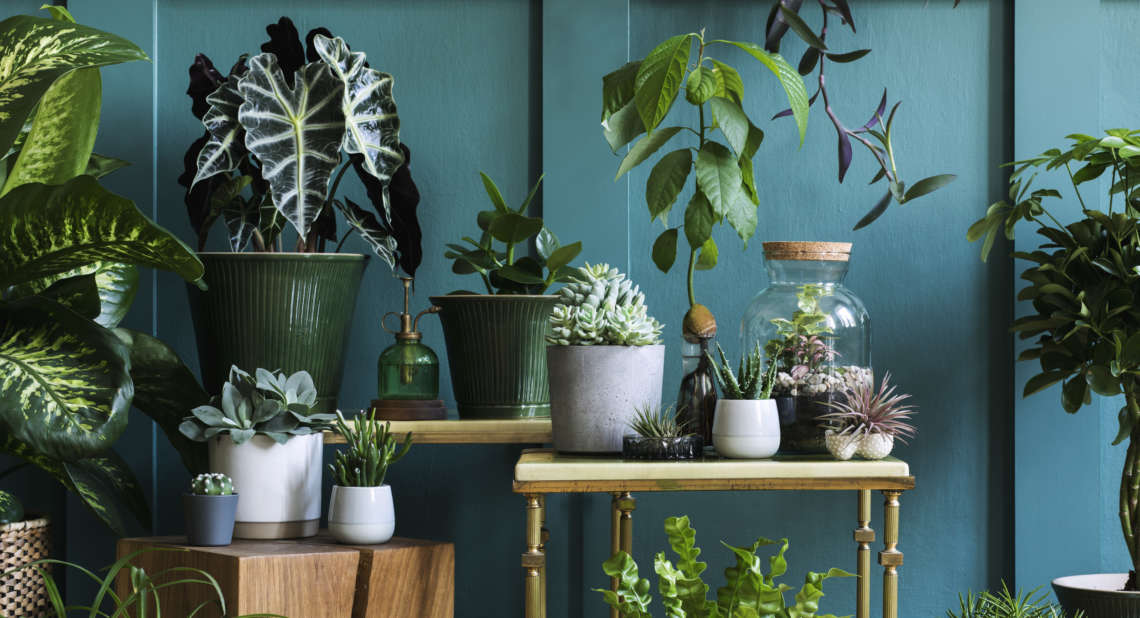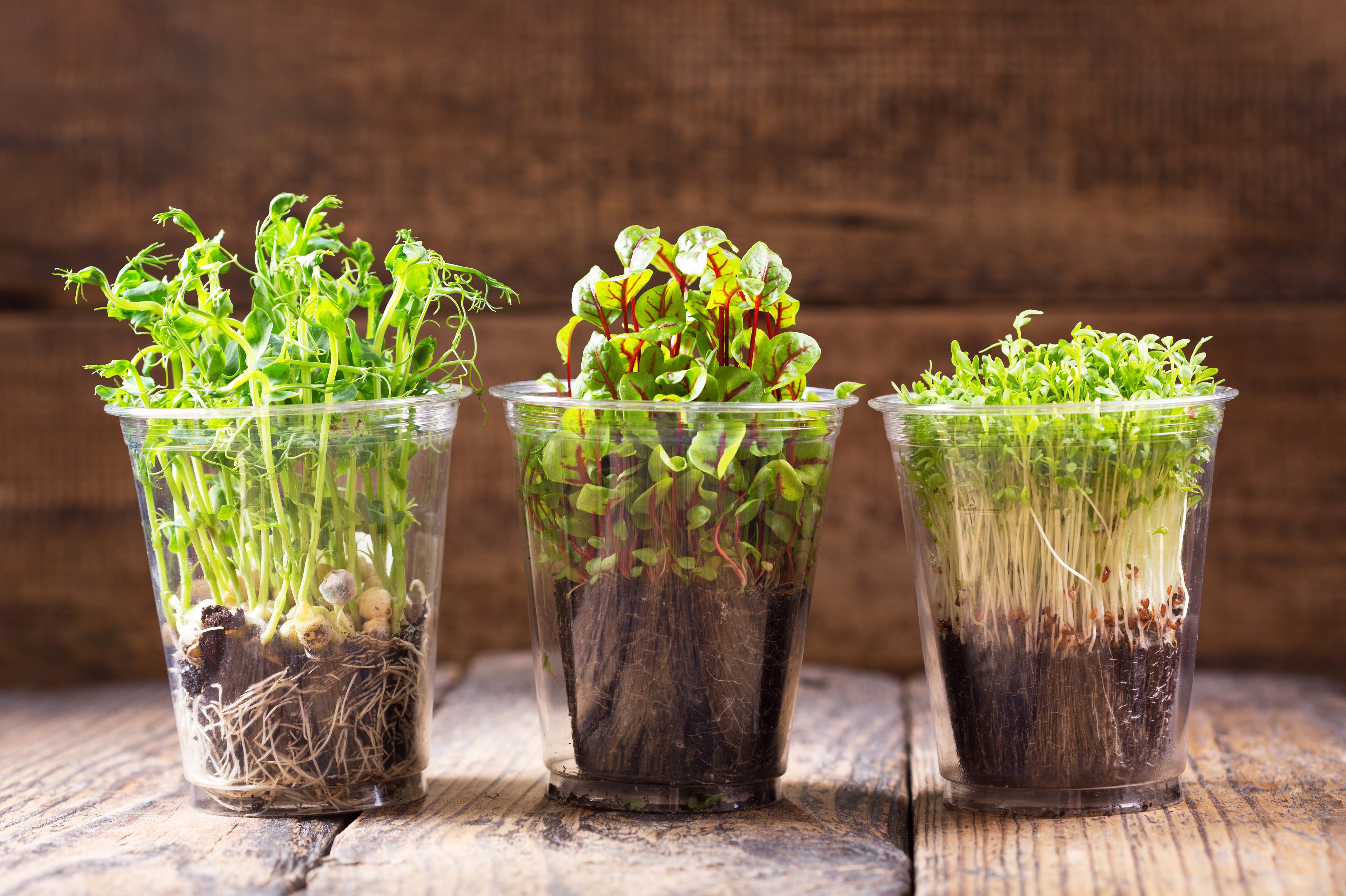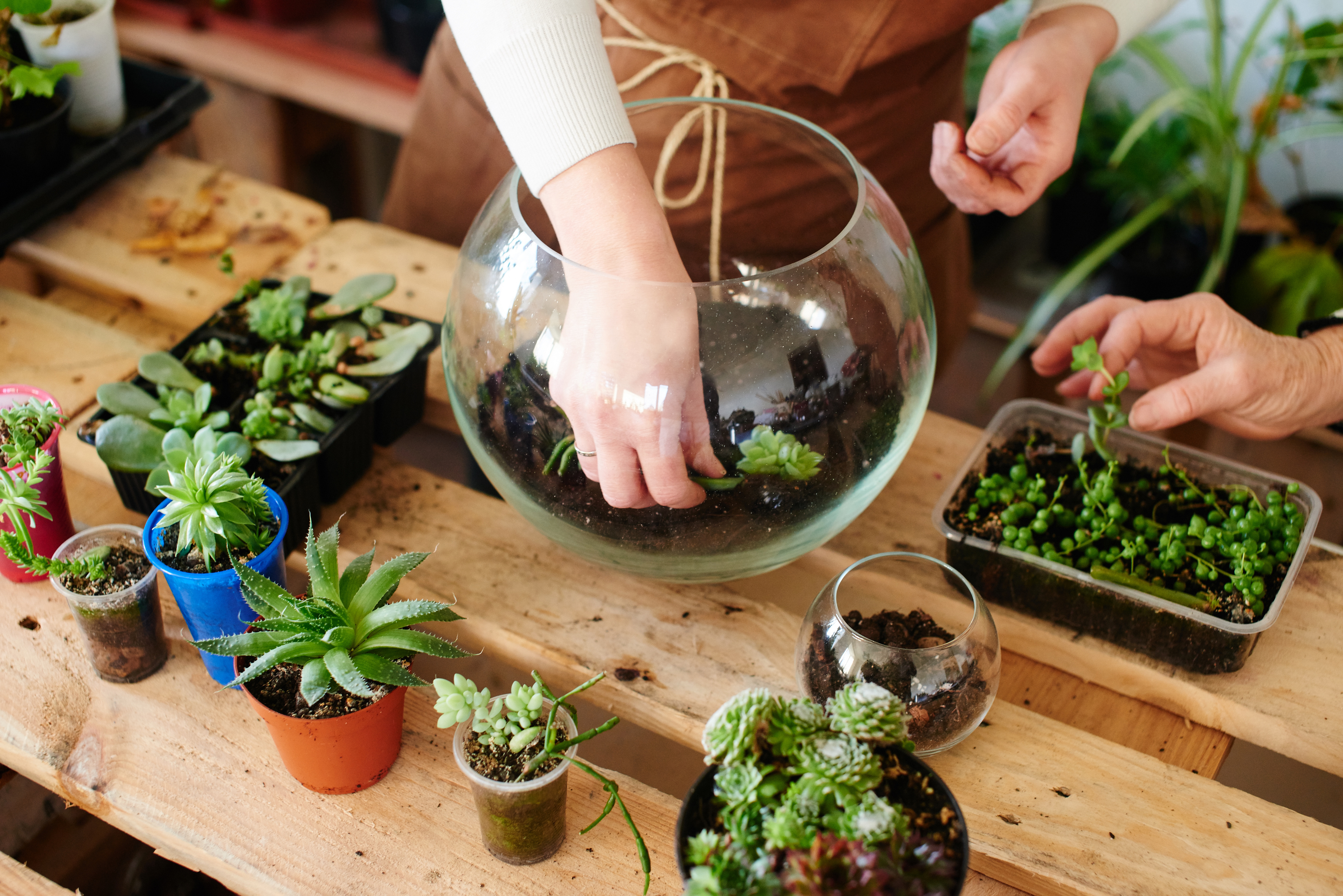Baking, sewing, meditating… many people are taking up new hobbies while we stay at home. Disability consultant Helen Dolphin has been gardening indoors to pass the time, here she explains how to get started.
It is well documented that gardening is good for our mental health and wellbeing, and at a time when many of us are self-isolating in our homes, looking after ourselves is more important than ever. However, many people do not have a garden or access to one at the moment, but that shouldn’t stop you from doing a bit of indoor gardening. Although garden centres are closed you can find most of what you need online or at a supermarket.
Herbs
Something really simple to get started with are herbs. You can grow these successfully on your windowsill. You can buy basil, parsley, coriander, thyme and mint in pots at most supermarkets. The pots they come in don’t really have enough soil to keep the plants going for long so I usually re-pot with a bit of potting compost into a slightly larger container. Some people like to pot lots of different herbs into one pot which can look really attractive, but I find the mint takes over and that’s all you end up with. Therefore, it is better to give each herb its own pot so that you can give it room to grow. You can get really nice matching pots that sit on a tray together.
Although herbs will need watering, they don’t like to be waterlogged so don’t overdo it. I find that plants will recover from lack of water but if they are waterlogged they start to rot and then there’s no coming back.
Micro greens
As well as herbs you could try growing micro greens on your windowsill. Micro greens are shoots or sprouts that are just young plants that are grown from seed and are then harvested and eaten, usually in a matter of weeks.
One of the easiest to have a go at are good old mustard and cress seeds. You don’t even need soil for these as they will grow on damp cotton wool.
Another micro green to try are pea shoots. You can either buy pea shoot seeds online or buy bags of Marrowfat peas (usually used to make mushy peas) from supermarkets. These dried peas can be sown into a tiny layer of compost and will shoot into edible greens in a matter of a week or two. If you keep your windowsill containers on a tray or in a dish it will stop them from leaking and causing a mess.
Vegetables
There is an abundance of vegetables that can be grown on windowsills, including radishes, lettuce, rocket, garlic and spinach. If you’re growing spinach you will need pots about six inches deep to give enough room to grow. If you have a nice sunny spot, then tomatoes can be grown in a window box, choose dwarf varieties as the normal sized ones would grow much too tall.
If you enjoy spicy food, have a go at growing your own chillies. Chilli plants do need a lot of sun so a south facing window is the best place to put it. You can either buy a plant or grow from seed. There are different varieties to choose from, some significantly hotter than others!
House plants
Many people have a few house plants dotted around their home but as we are spending a lot more time indoors it’s nice to get a bit more greenery inside. There are clearly loads of different house plants to choose from and many thrive on windowsills. If you have south facing windows, then cacti and succulents are a good choice as they like direct sun light. Other plants that can cope with a lot of sun are aloes, agaves and echeverias. If you have a dark corner, then try an Asparagus fern or a Chinese money plant. There are lots of websites with information to help you choose the right plant for your house.
Terrarium or bottle garden
If you feel like a bit more of a challenge than just buying a new house plant, why not try creating a terrarium or bottle garden? The key to a successful terrarium is to make sure all the plants have similar growing conditions. So combine all plants that like a lot of light, or all plants that like a lot of shade. If your container is closed choose plants that like moisture whereas if it’s open choose plants that prefer a drier environment. I tried growing a bottle garden a few years ago but found that one plant swamped all the others and killed them, so close attention is needed to keep your plants under control.
I’ve found a couple of sites with instructions on how to make your own terrarium, plus suggestions for plants to use. Visit Gardeners Path and Gardeners World for guides on creating bottle gardens.
Related Articles
How to: enjoy gardening with a disability
Woodland walks good for mind and body, studies show
The importance of self-care and how I practice it
![]()







